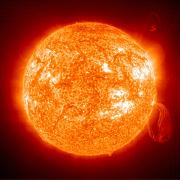 Space Weather
Space Weather 
Space weather is becoming a very important aspect of the National Weather Service, and will continue to grow as we gain a better understanding of the physical processes of the sun and their effects here on Earth as well as in space itself.
Space weather can have significant effects to humans on Earth as well as in space due to the growing of number of satellites in space, power grids on earth, use of Global Positioning Systems (GPS), as well as commuter air travel and space travel. Click the image of GOES-16 below for more information on this latest weather satellite.

Solar flares, coronal holes, and coronal mass ejections (CME's) can emit large bursts of radiation, high speed electrons and protons, and other highly energetic particles that are released from the sun, and are sometimes directed at Earth. These particles and radiation can damage satellites in space, shut down power grids on earth, cause GPS outages, and have serious health concerns to humans flying at high altitudes on earth, as well as astronauts in space.
There are 3 main categories of space weather storms: geomagnetic storms, caused by CME´s and the high speed wind from coronal holes, that can create beautiful auroras, as well as cause problems for electrical systems, satellites, GPS, and radio systems; solar radiation storms, associated with both flares and CME´s, that can be a danger to the health of astronauts and to people flying at high altitudes, and also cause problems for satellites and radio systems; and radio blackouts, caused by solar flares, resulting in communications and GPS outages.
For this reason, the Space Weather Prediction Center (SWPC) located in Boulder, Colorado issues a variety of space weather forecasts and warnings daily to alert those concerned with these effects.
Here are some helpful shortcuts:
Images:
Sunspots:
Sunspots are areas on the sun in which the temperature is cooler than its surroundings, causing a dark spot to appear on the surface of the sun. Theyare areas of strong magnetic fields that are thousands of times stronger than the Earth's magnetic field.
Sunspots usually come in groups and contain two sets of spots. One set will have a north (or positive) magnetic field, while the other will have a south (or negative) magnetic field. Sunspots can appear randomly on the face of the sun, and remain for several days or weeks, or be gone in just a few days.
The number of sunspots that appear on the sun's surface changes on a nearly regular cycle called the "Sunspot Cycle" or "Solar Cylce." This cycle on average lasts about 11 years. Every other solar cycle, there is a 22-year cycle in which the poles on the sun switch. At the end of this cycle, the "north pole" will become the "south pole," and after another 22-years, vice versa.
The position of where sunspots occur also changes in relation to the sunspot cycles. At start of a new cycle, solar minimum, the sunspots appear in the higher latitudes. As the sunspot cycle progresses toward solar maximum, they begin to appear toward lower latitudes, and near the equator.
As the sun progresses to the end of the solar cycle, the sunspots can appear anywhere on the face of the sun, but mostly in lower latitudes. Follow this link to see a plot of the sunspots positions on the sun.
Sunspots Cycle 24 Progression:
Sunspot Cycles and Anomalies (Based on 1901-2000 Average) through 2014:
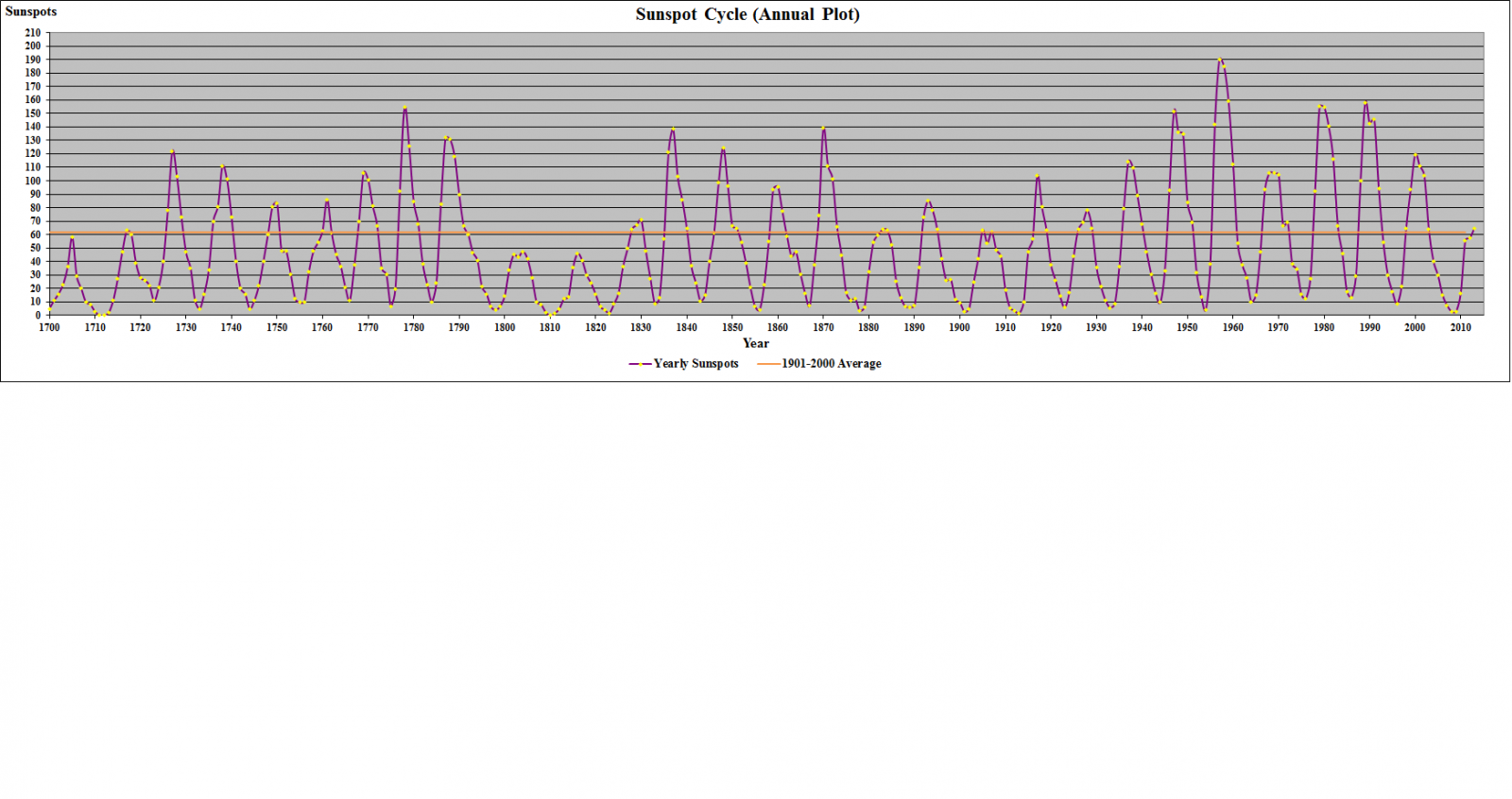
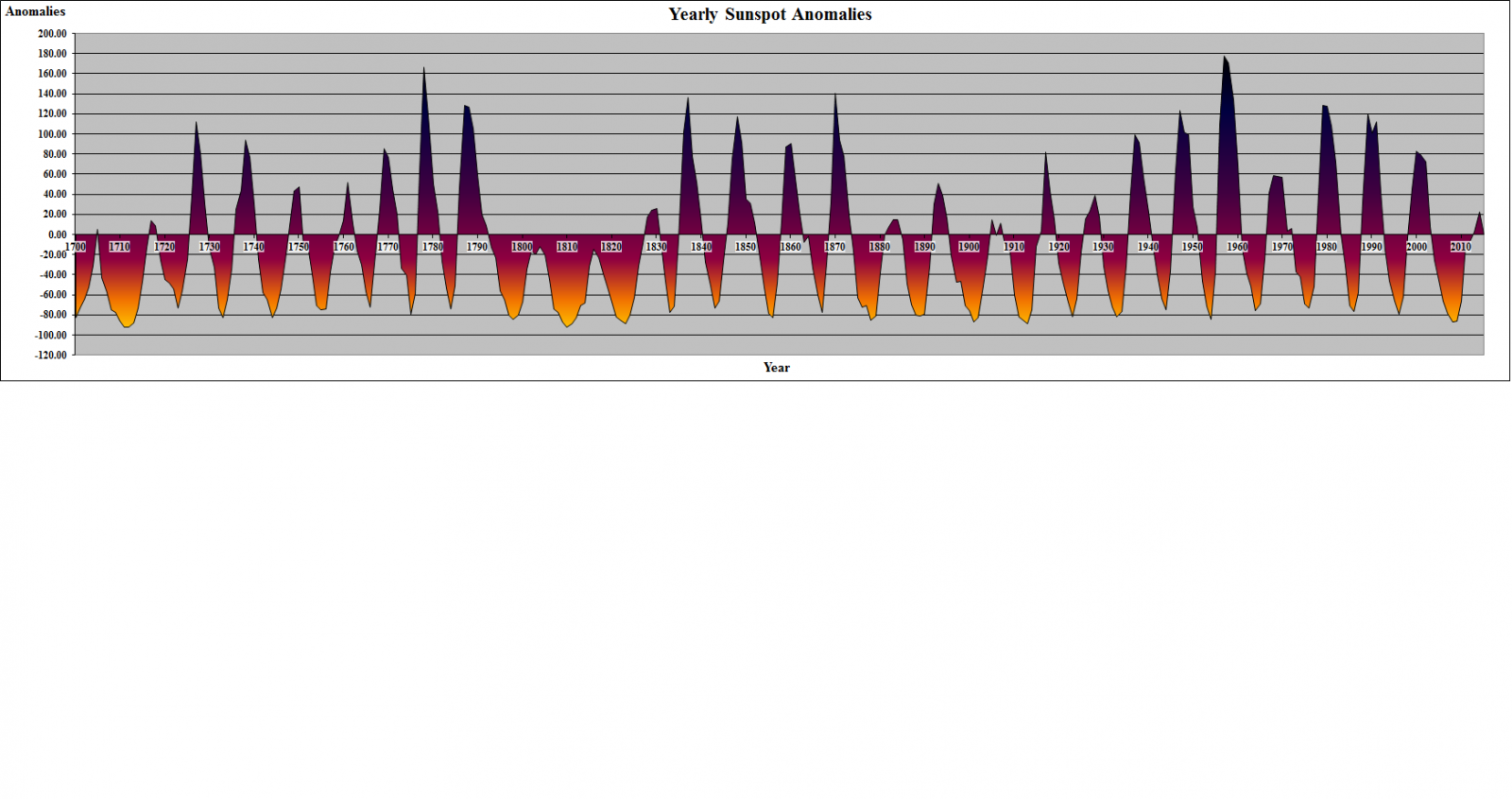
Sunspots Data Provided by:
WDC-SILSO, Royal Observatory of Belgium, Brussels
Other Astronomy Interests
Sun and Moon Information:
Meteor Showers:
Iridium Flares:
- Heavens-Above - Predictions of iridium flares as well as ISS and other satellites
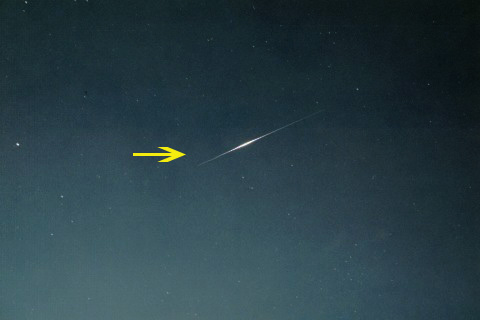
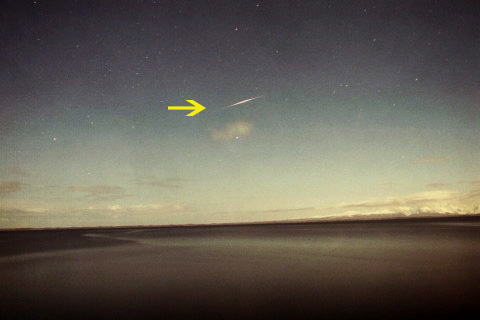
Photographs courtesy of Lee Robertson (Cold Bay, Alaska)
Noctilucent Clouds (NLC):
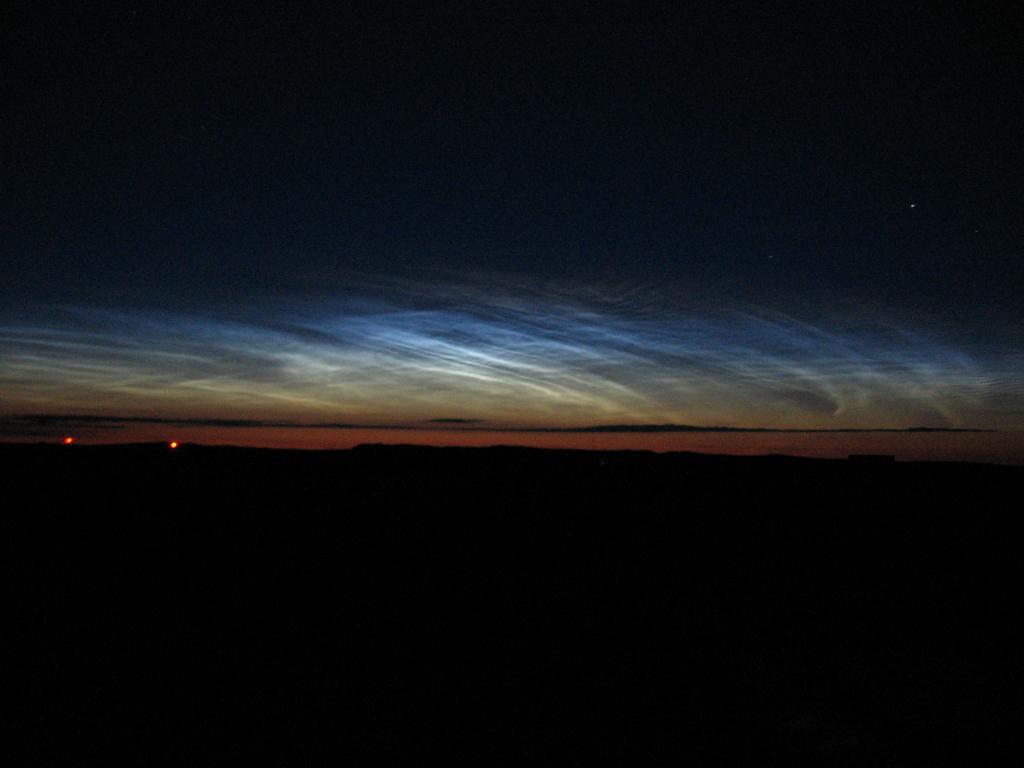

Photographs courtesy of Lee Robertson (Cold Bay, Alaska July 13-14, 2005)

 Space Weather
Space Weather 



